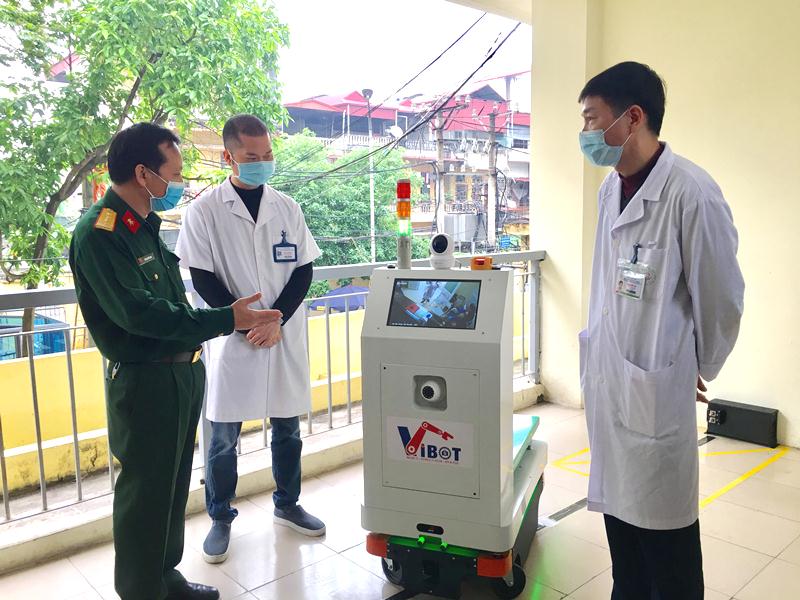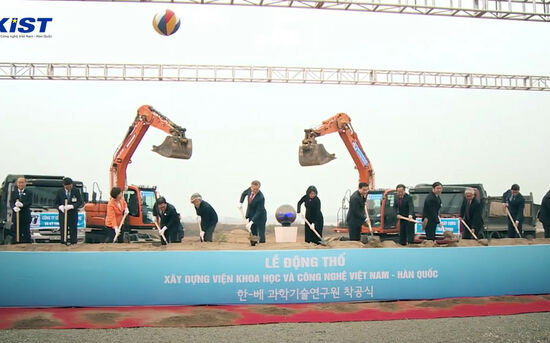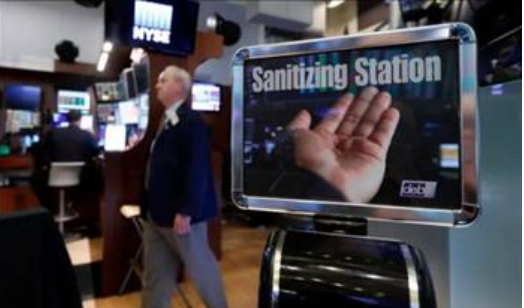Robots can work in groups in isolated areas to replace, support health workers in the service and care of patients and suspects.
On April 7, 2020, a team of experts set up by the Minister of Science and Technology held a meeting to evaluate the results of the first phase of researching and manufacturing Vibot-1a robots with the rate of 100% members agreeing to approve. and unanimously recommend that the Ministry of Health consider to allow the use in isolation facilities.
With the efforts of young researchers, within just 2 weeks, a robot called Vibot version 1a has been built and can master the task of automatically transporting food, medicine, necessities. , ... from outside to the sick rooms; transport domestic waste, medical waste, laundry, ... from the patient room to the gathering area and support remote communication between medical staff and patients. Vibot robots are designed to be versatile and flexible to meet the specific needs of each isolated area, able to transport a variety of goods with a load of up to 100kg. All activities of the Robot System are supervised and controlled by the Operation Center, facilitating the expansion of the robot's operating range or adding the number of robots to the system when necessary.
The Vibot-1a version uses magnetic stripe navigation technology and the identification card is simple but highly reliable, allowing the robot to move itself in the quarantine area to perform tasks. Vibot-1a is capable of detecting and avoiding obstacle collisions thanks to sensors equipped at the front and rear. With a large capacity battery pack and automatic charging station, Vibot-1a can work continuously for 12 hours and automatically returns to the station to charge when running out of power. Currently, Vibot-1a has been installed, tested in real environment and received good feedback at Bac Thang Long Hospital, Hanoi (where is planned to isolate and treat Covid-19 patients when an outbreak broke out).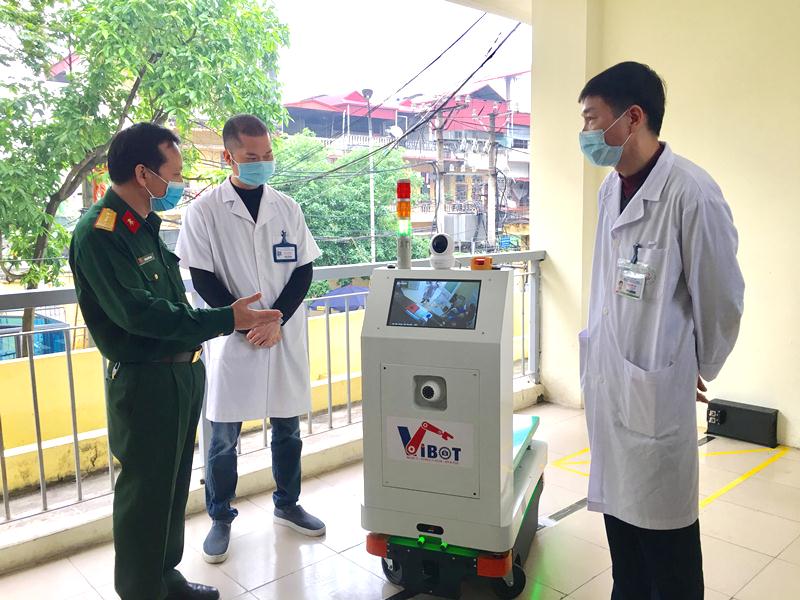
Representative of Military Technical Academy introduced the robot to the doctors of Bac Thang Long Hospital
Major General Nguyen Lac Hong, Deputy Director of the Military Technical Academy, said Vibot is designed to be versatile and flexible to meet the special needs of each isolated area, which can transport many other goods with a payload up to 100kg. During transportation, the robot can play music, play entertainment news. Using intelligent sensors, Vibot can emit many sounds such as "please get out of the way", "thank you", "goodbye".
In particular, doctors can interact with patients through a specially established transmission system, with a camera mounted directly on the robot, with high image and sound quality. Thereby limiting direct contact, limiting the risk of cross-contamination.
All activities of the Robot System are supervised and controlled by the Operation Center, facilitating the expansion of the robot's operating range or adding the number of robots to the system when necessary.
Through preliminary calculations, each robot can replace 3-5 medical staff. In addition to reducing the risk of infection, the use of robots also allows health workers to focus their time, effort, care and treatment for critically ill patients.
Major General Nguyen Lac Hong added that after completing the Vibot-1a version, the Academy's robotics team is continuing to upgrade and improve the features so that the robot can operate fully automatic and more clever, aiming to create Vibot with modern features such as TUG robot of Aethon, USA.
With the philosophy of one platform, many purposes and its preeminent features, Vibot can also be widely applied in industry and life, serving in buildings, automated warehouses or workshops. manufacturing and other special environments to support on-demand shipping.
According to Prof. Dr. Nguyen Van Kinh, Chairman of the Vietnam Infectious Association, former Director of the Central Hospital of Tropical Diseases, the product has initially met the need for COVID-19 treatment support, helping to reduce workload for doctors and nurses, reducing direct contact with infected and suspected people, thereby reducing cross-contamination.
Prof. Dr. Nguyen Van Kinh shared: For infectious diseases, cross-infection is very dangerous. Therefore, limiting health workers to have too much contact with infected patients is a good solution at the present time. This robot can replace medical staff, nurses, waiters in carrying rice, medicine, garbage collection ... so it will reduce the load for health workers. In addition, the robot has the function of connecting the ill person with the doctor outside the isolation area to receive the necessary advice, which will also avoid the risk when the doctor talks directly with the patient. .
Prof. Dr. Dao Van Hiep - Head of the expert group established by the Minister of Science and Technology, said the topic was divided into two phases. The first stage is the formation of products to serve the quarantine area, so the technology is only moderate, meaning it is only a self-propelled robot. The second stage will approach to a higher level that is intelligent robot, the movement does not depend on the direction line but must follow the preloaded map or the robot can build its own operation map. Afterwards, the robot does not have to operate in one unit but operates in a group of robots at that time, the control center must control a whole group of robots, the robots can interact with each other without depending on the control center ...
This is an important and significant success while the disease is taking place very complicatedly around the world, confirming the level of Vietnamese scientists, as well as the timely participation of the whole system. Politics system in general, the Ministry of Science and Technology and the units involved in the study in particular before the problems posed from life.
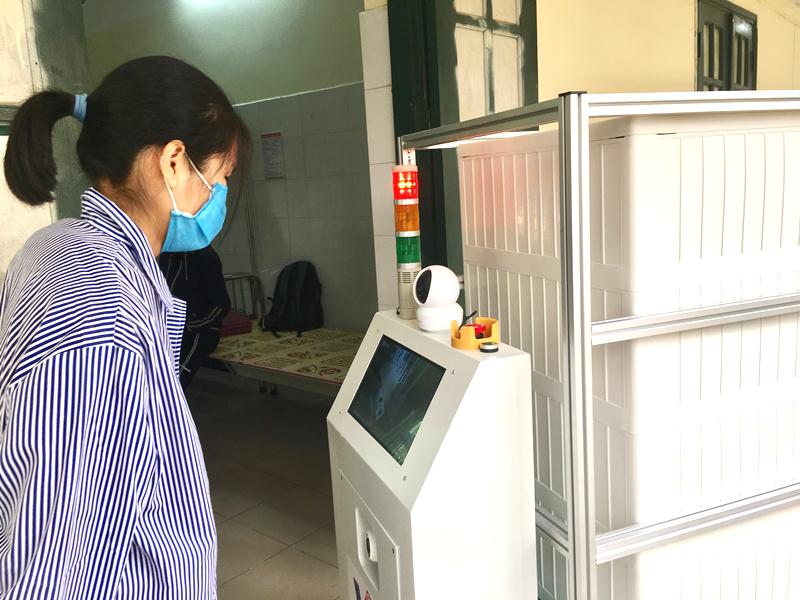
The patient can interact with the doctor through a transmission system mounted on the robot

